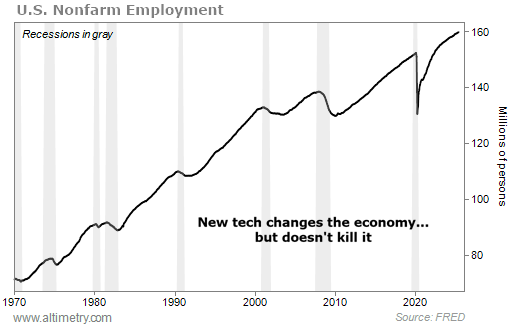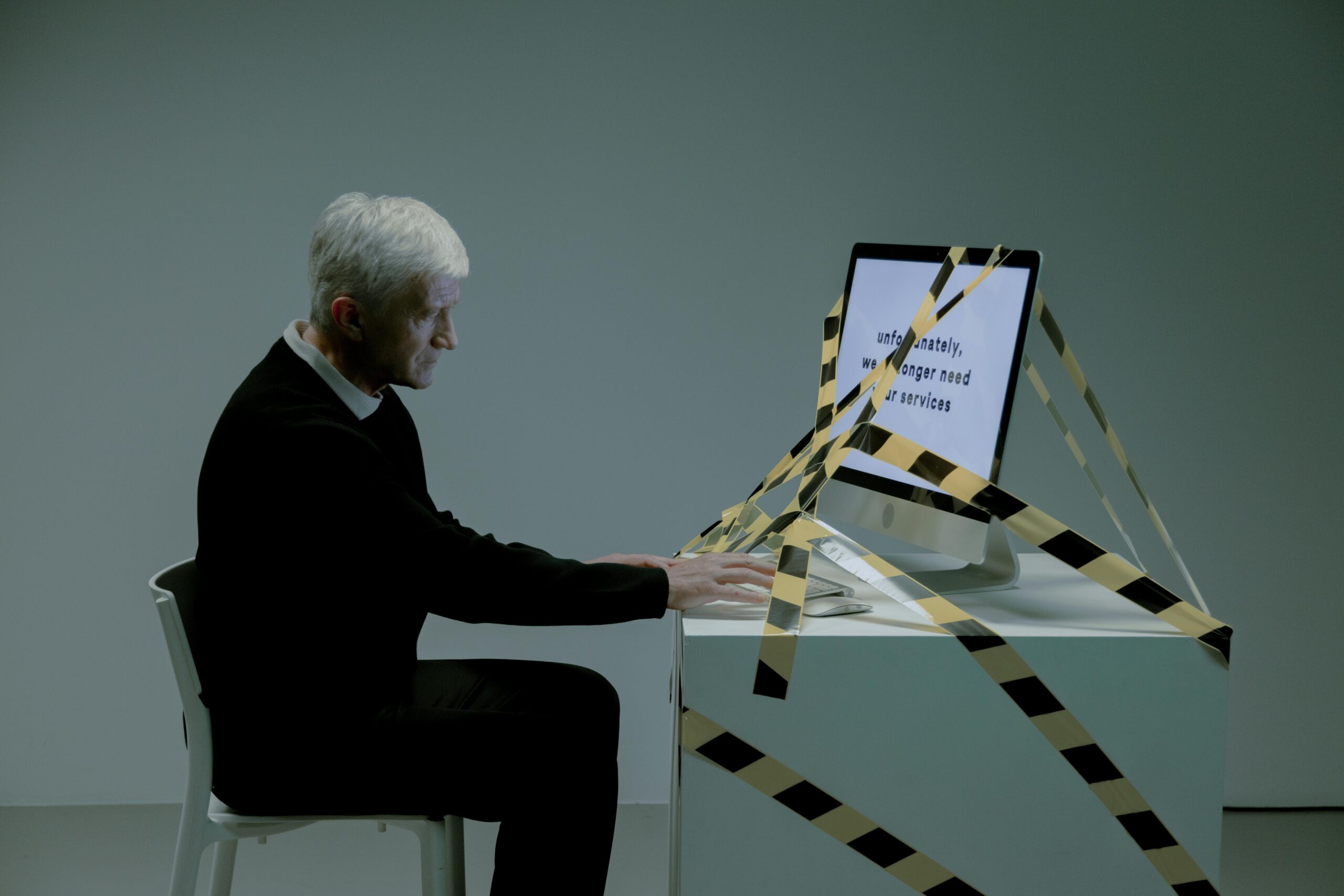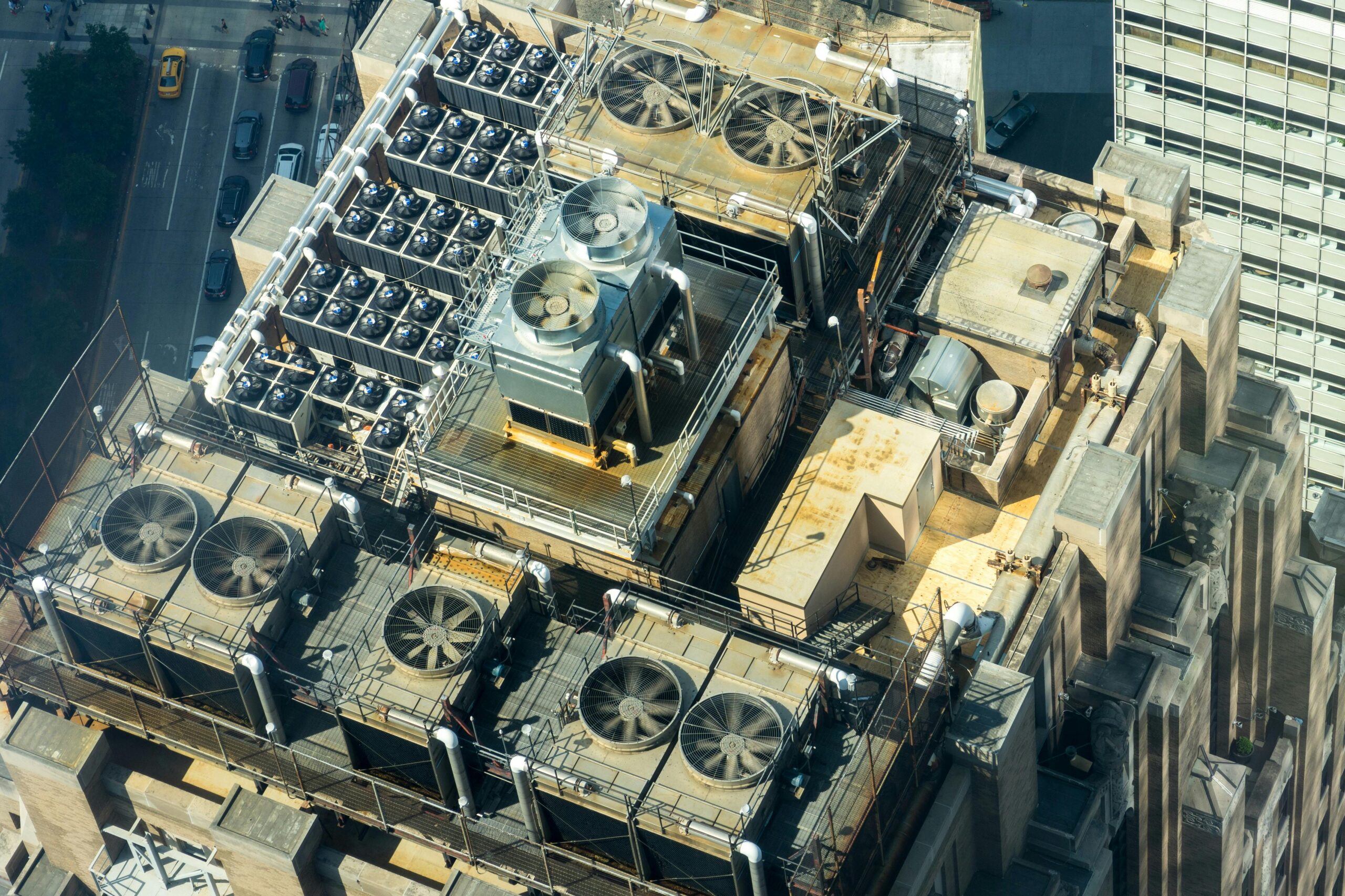 Even Big Tech isn't safe from AI cuts...
Even Big Tech isn't safe from AI cuts...
Microsoft (MSFT) announced last week that it's laying off up to 9,000 employees... its third round of layoffs since the spring.
Investors were already on high alert. In May, the software giant laid off more than 6,000 workers. And those cuts were followed by several hundred last month.
All these layoffs are intended to rein in costs amid Microsoft's massive AI investment.
Insiders say the company wants to trim fat in areas where AI has made humans redundant. And it's not alone...
Also last month, Amazon (AMZN) CEO Andy Jassy warned employees that layoffs could be coming. As the company deploys more generative-AI tools and agents, he said Amazon "will need fewer people doing some of the jobs that are being done today."
Jassy underscored how quickly AI is reshaping internal workflows... eliminating routine tasks and streamlining operations.
This slew of announcements has set off alarm bells across corporate America. Even the most profitable tech firms are laying off knowledge workers in favor of AI.
What happens when the rest of the economy follows suit?
But while AI itself is an unprecedented technology, tech-driven layoffs are nothing new.
We've seen similar trends multiple times throughout history... and those examples can tell us a lot about what to expect.
 Every wave of innovation triggers fear... and growth...
Every wave of innovation triggers fear... and growth...
New technology has been framed as a job threat for more than 200 years.
In the early 19th century, British textile workers known as Luddites feared they'd be replaced by automated looms. They organized raids, breaking into factories and smashing the machinery they saw as a threat.
But while folks didn't need to be skilled craftspeople anymore, the shift made textile mills a year-round operation. And that increased job security for the workers who oversaw the machines.
Said another way, the mechanization of textiles didn't destroy the market. It made goods cheaper and more accessible... while increasing employment in related industries.
We've seen this pattern play out all throughout history. There's the advent of the assembly line in the 1910s... office computing in the 1980s... and even automation in manufacturing through the 2000s.
Every time, jobs in specific sectors declined. Others emerged to meet new demands.
Consider U.S. manufacturing, which we've been automating since the 1970s. Employment in the sector fell from nearly 20 million in 1979 to about 13 million by 2019.
But the overall job market didn't go bust. During the same period, total U.S. nonfarm employment grew from roughly 90 million to 150 million.
Check it out...

The U.S. labor market is resilient. As of June 2025, total nonfarm employment stands at about 159.7 million... an all-time high, despite automation and outsourcing.
 AI will displace some white-collar jobs... especially routine roles in sales, customer service, and operations...
AI will displace some white-collar jobs... especially routine roles in sales, customer service, and operations...
Recent Big Tech layoffs also included "layoff resistant" jobs. A significant portion of Microsoft's cuts hit software engineers. That's a departure from what we're used to.
But these changes also unlock new capabilities, just as prior innovations did. That means more demand for products and services that didn't exist before.
We could see entire new industries built on AI foundations.
If you'd like to hear more of our thoughts on AI layoffs, be sure to check out our free Altimetry Authority YouTube show. We'll dive deeper into this topic in today's episode.
Big Tech job cuts are making headlines today. But they're likely just the opening to another familiar story.
There's always opportunity in the disruption.
Regards,
Joel Litman
July 8, 2025



 Even Big Tech isn't safe from AI cuts...
Even Big Tech isn't safe from AI cuts...


